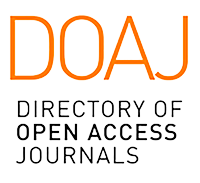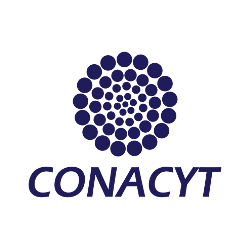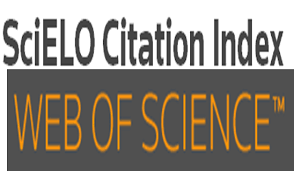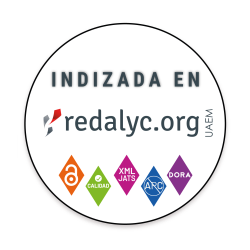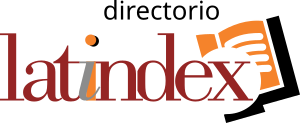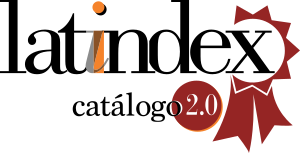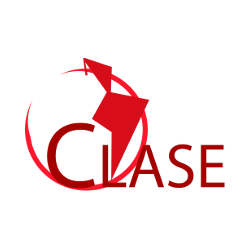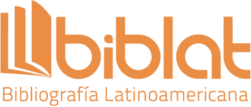Submission Preparation Checklist
As part of the submission process, authors are required to check off their submission's compliance with all of the following items, and submissions may be returned to authors that do not adhere to these guidelines.- If it is being submitted to a section of the journal that is peer-reviewed, you must ensure that the instructions in Asegurando de una revisión a ciegas) have been followed.
- The text meets the bibliographic and style requirements specified in the Guidelines/es
- The web addresses have been added for the references where possible.
- The images meet the characteristics outlined in the Guidelines/es
- An ORCID (Open Researcher and Contributor ID) is available.
Articles
All original and unpublished academic research articles that align with the thematic focus of the journal will be accepted, provided they present innovative perspectives, case analyses, or theoretical problems.
With a length between 9,000 and 12,000 words maximum (including footnotes), articles will be peer-reviewed anonymously by two specialists in the field. Only material derived from a doctoral thesis will be accepted if the text has been restructured argumentatively in the format of an article.
Works, reports, documents
In this section specific topics relevant to art historical research are published, that is initial approaches towards a research topic before it is published as an article or book. Unknown documents, reproductions of unknown or restored works of art; information concerning institutions of our discipline (archives, organizations, institutes, among others) and their programs; academic trends, cultural policies (of museums, conservation institutes). The length of the contribution can oscillate between 2,500 and 6,250 words.
Profiles
This section publishes tributes or obituaries of distinguished intellectuals in our disciplinary field, both from our university and from around the world. The texts will be peer-reviewed anonymously by a specialist in the subject.
The length is between 750 and 2,500 words.
Books
This section publishes book reviews on the history and theory of art, design, architecture, and urbanism, analyzing the book in its entirety. The texts will be peer-reviewed anonymously by a specialist in the field. In accordance with the journal's policies, reviews of books published by our own institute (IIE) are not accepted, as they are considered potentially lacking objectivity. The length ranges from 750 to 2,500 words, except in special cases subject to approval by the Editorial Committee.
Correspondencia
.Privacy Statement
Revista Anales del Instituto de Investigaciones Estéticas
Instituto de Investigaciones Estéticas
Privacy Notice
The Universidad Nacional Autónoma de México, by means of its Instituto de Investigaciones Estéticas, with domicile in Circuito Maestro Mario de la Cueva s/n, Ciudad Universitaria, CP. 04510, Alcaldía Coyoacán, Mexico City, is responsible for receiving your personal data and for their treatment, protection and storage in the terms of article 12 of the Reglamento de Transparencia, Acceso a la Información Pública y Protección de Datos Personales (Regulations on Transparency, Access to Public Information and Protection of Personal Data) of the Universidad Nacional Autónoma de México, published in the Gaceta UNAM on September 12, 2011, as also in the Second Transitory Article of the Ley General de Protección de Datos Personales en Posesión de Sujetos Obligados (General Law on the Protection of Personal Data in the Possession of Obligated Subjects), published in the Diario Oficial de la Federación on January 26, 2017.
The purposes for which your personal information will be treated are those that arise from the competences established in the First Article of the Organic Law of the Universidad Nacional Autónoma de México; as also in the Ninth Article of the Estatuto General de la Universidad Nacional Autónoma de México (General Statute of the UNAM), regarding teaching and research.
The aims of the said data treatment are the following:
- Optimal navigation of the website, and
- Generation of statistical information on navigation of the website.
For the above mentioned purposes, we require the following personal data:
- Full name;
- E-mail;
- Institution;
- City;
- Federal State;
- Date of Birth; and
- Internet Protocol Address (IP) assigned by your service provider.
Accepting the present notice implies that the personal data have been given voluntarily. Likewise, the owner of the said data recognizes as his/her responsibility their authenticity and current validity.
We wish to inform you that the Universidad Nacional Autónoma de México, via its Instituto de Investigaciones Estéticas, does not make transferences of your personal data to third parties.
Use of cookies:
We likewise inform you that in our Website we use cookies and other technologies by means of which it is possible to generate statistical information. These cookies are temporary, since they are eliminated as soon as you close the navigator. The said cookies do not contain search histories, nor sensitive or personal information.
In order to exercise your rights to access, rectification, cancelation and opposition you may apply to the Unidad de Transparencia de la Universidad Nacional Autónoma de México (Transparency Unit of the UNAM), with domicile at Antigua Tienda UNAM Estadio (first floor), west side of the Estadio Olímpico, Ciudad Universitaria, Alcaldía Coyoacán, 04510, Ciudad de México; or via the Plataforma Nacional de Transparencia (National Transparency Platform) (http://www.plataformadetransparencia.org.mx).
We reserve the right at any moment to make modifications or to update the present notice in order to attend to material changes in the law or of internal policy, or due to new requirements for provision. Information regarding such modifications will be accessible to the public via this Institute’s Web portal: https://www.esteticas.unam.mx/aviso-privacidad
Information last updated: March 29, 2019
